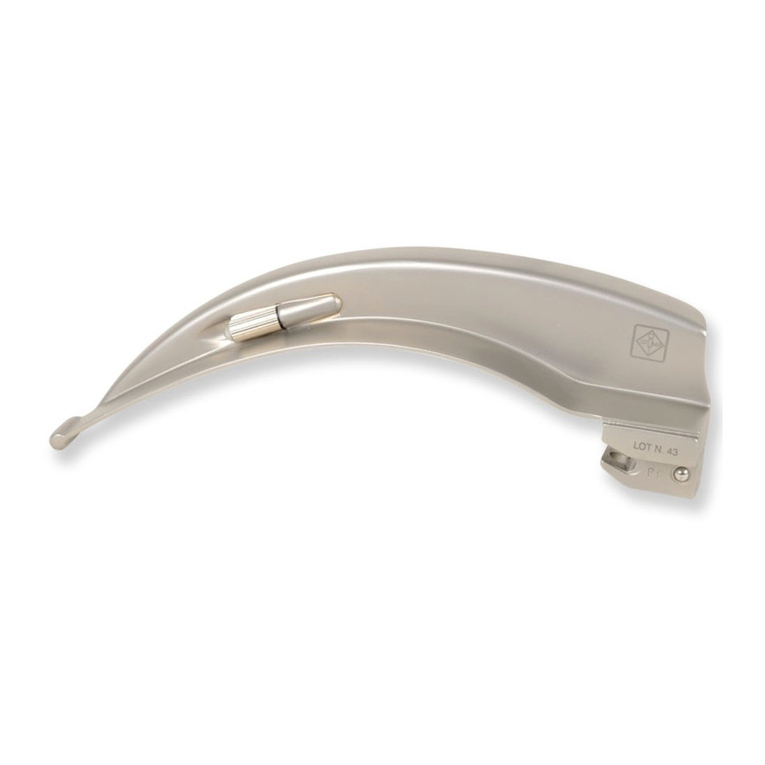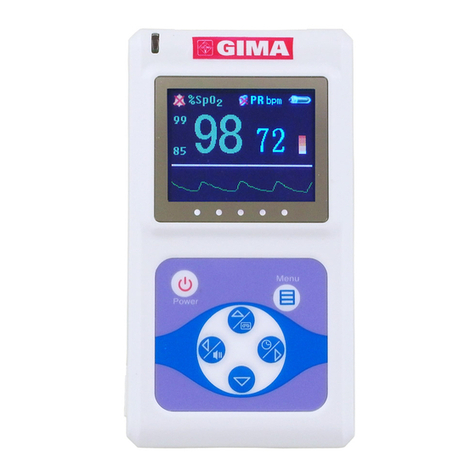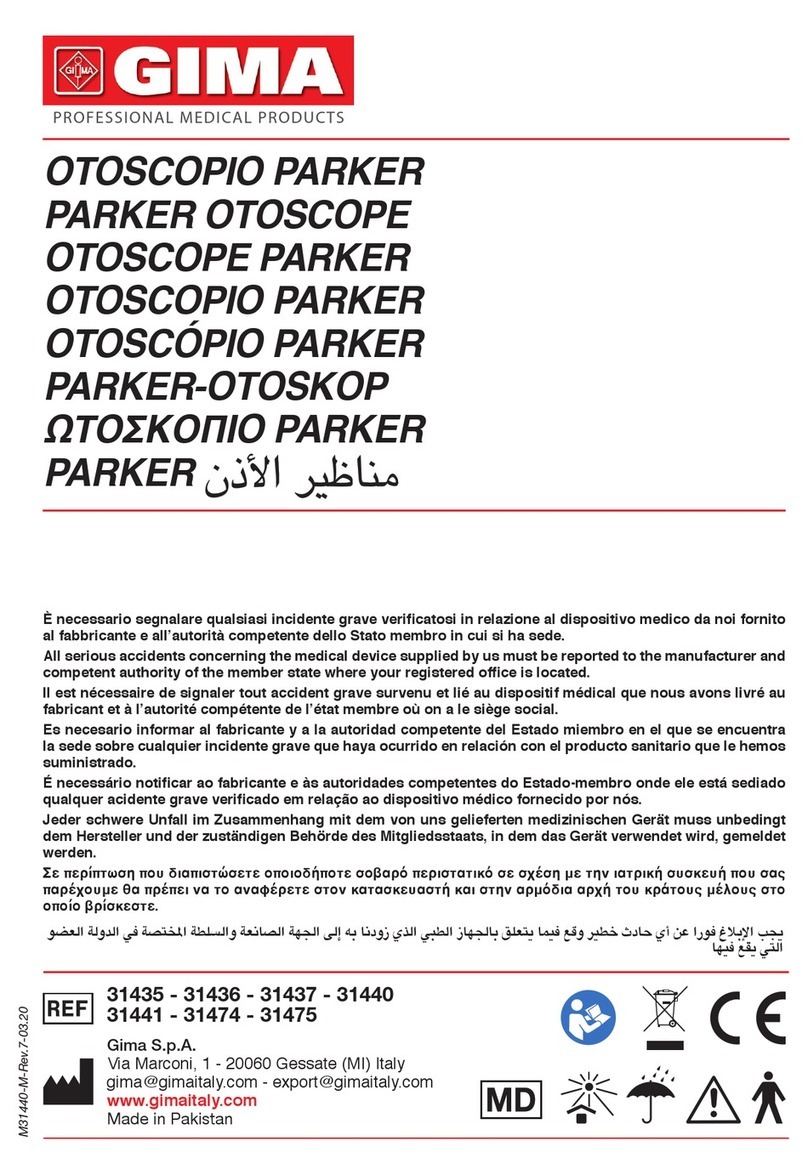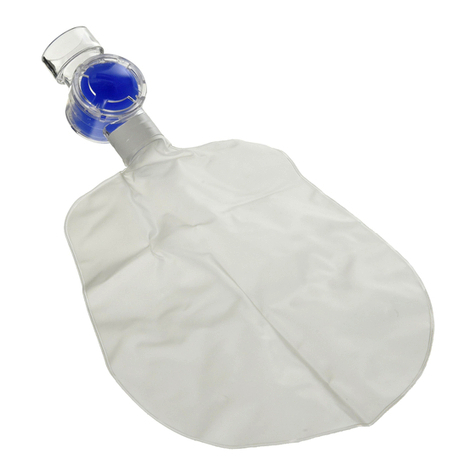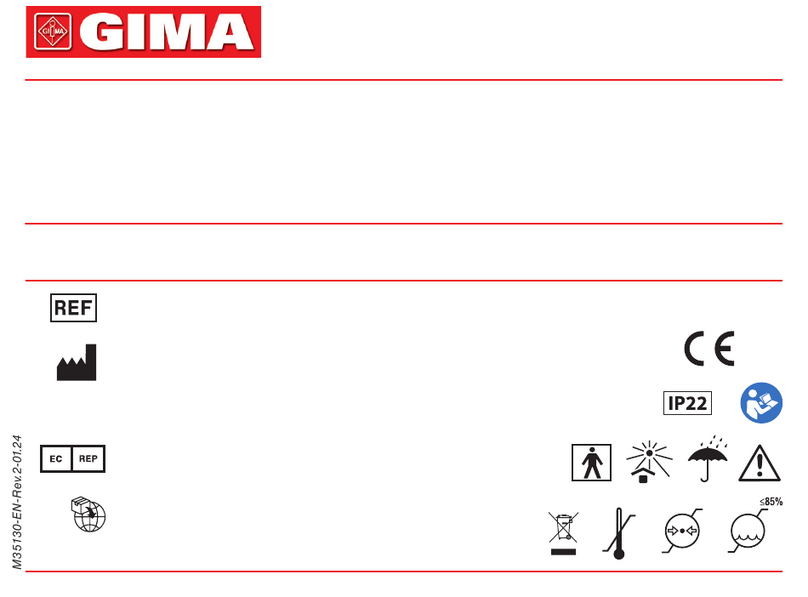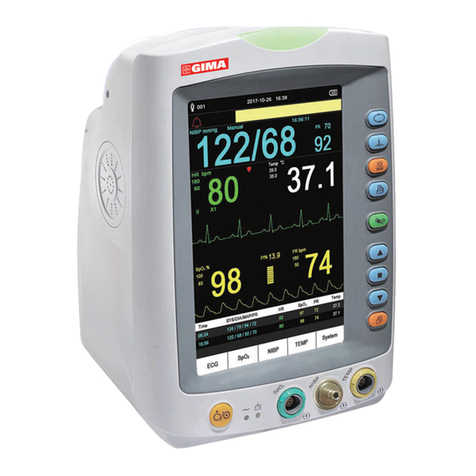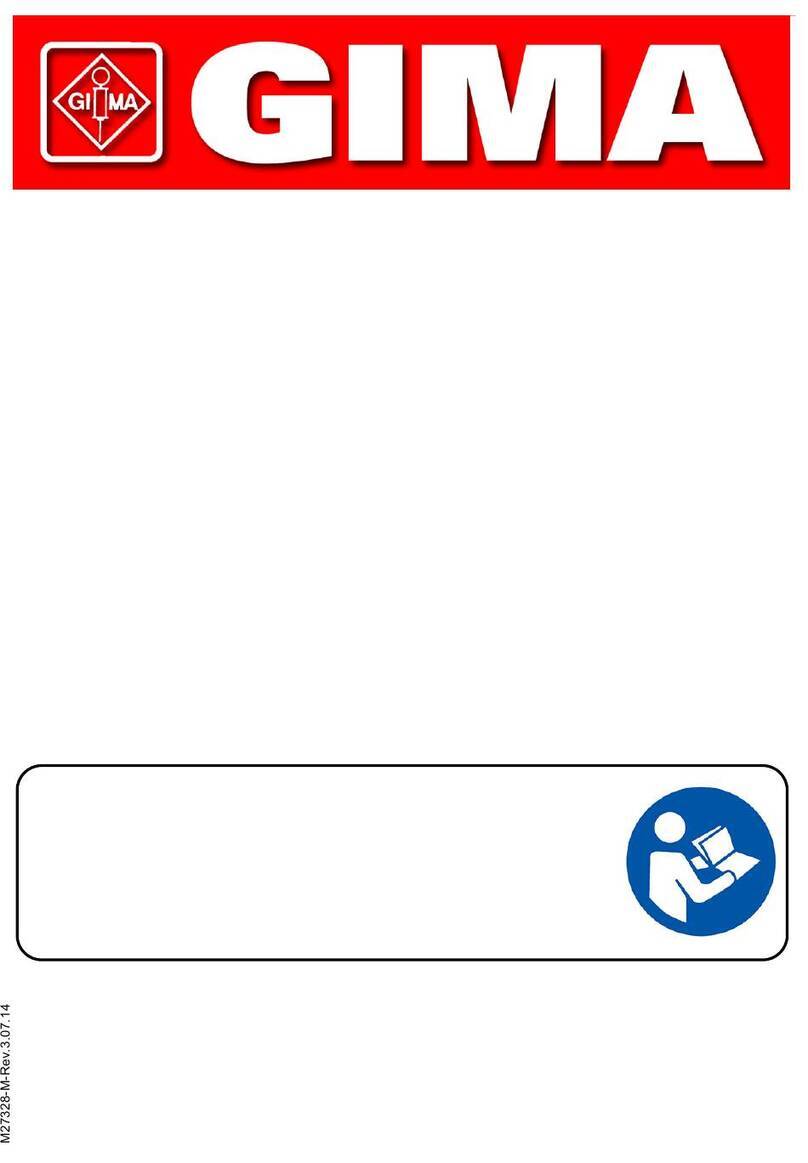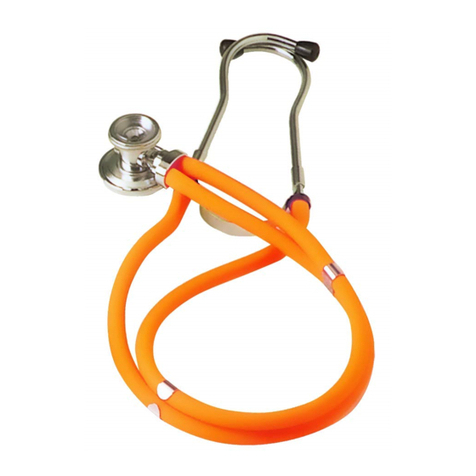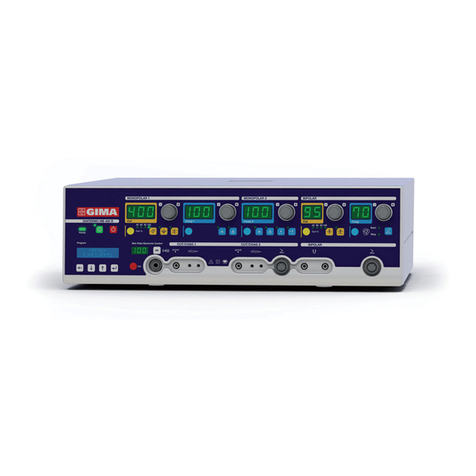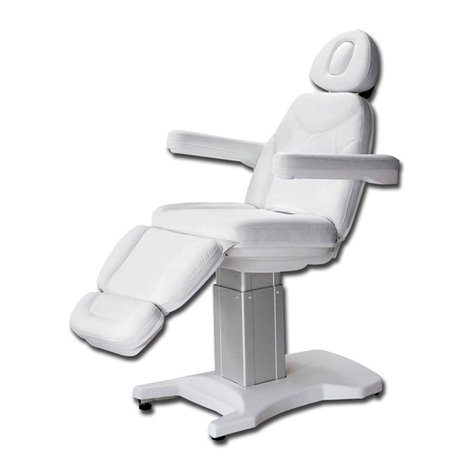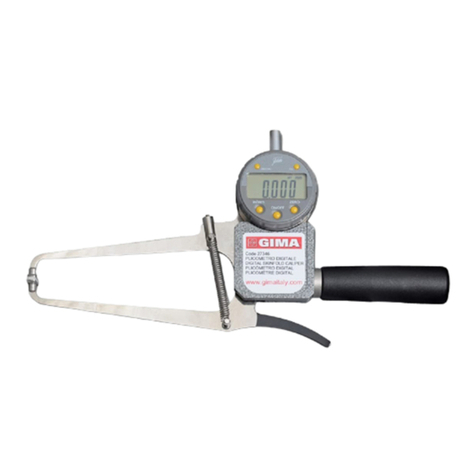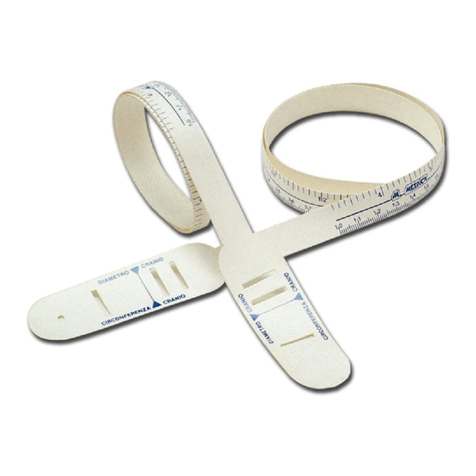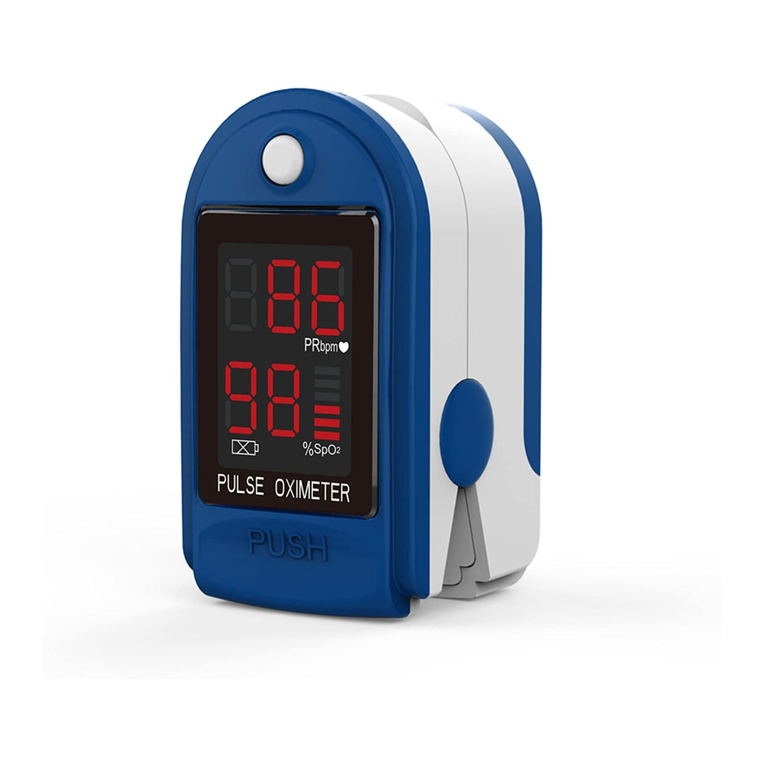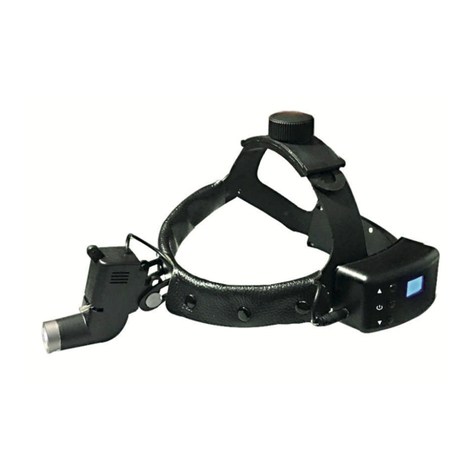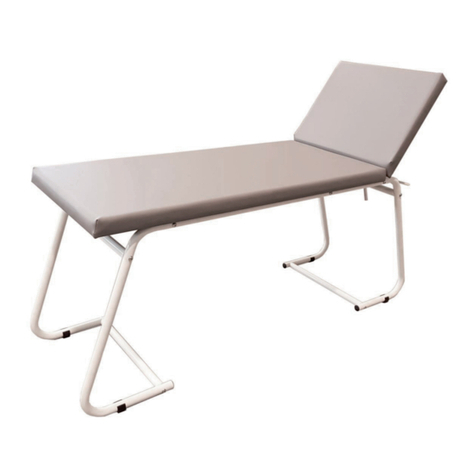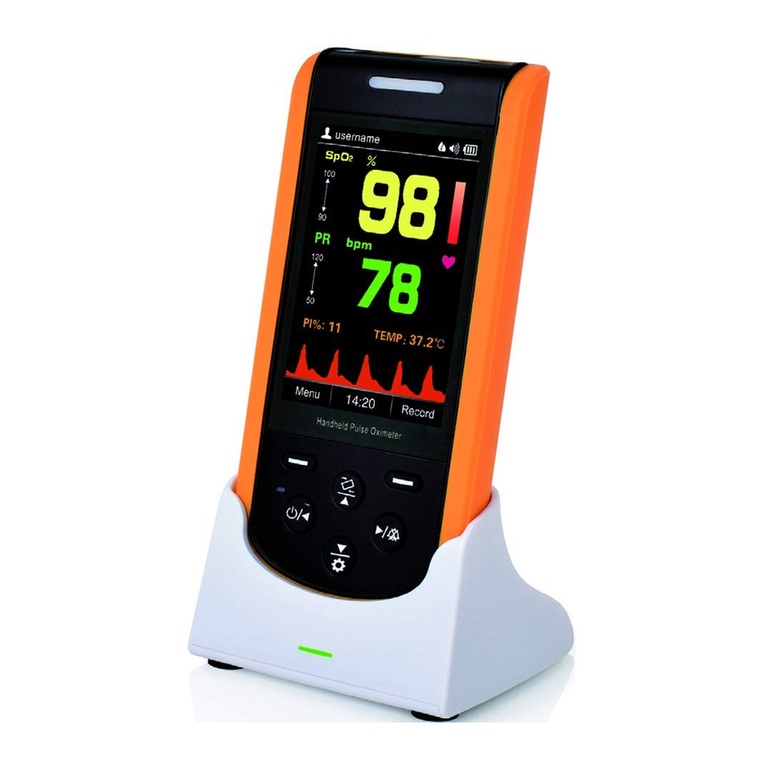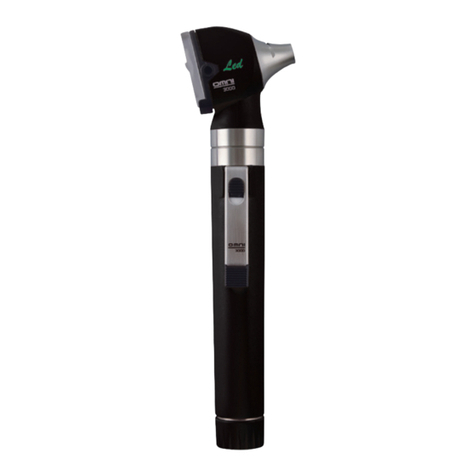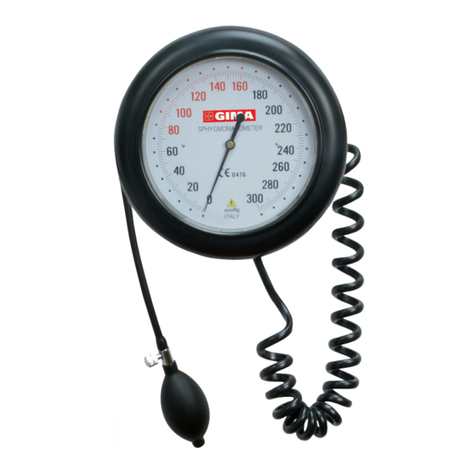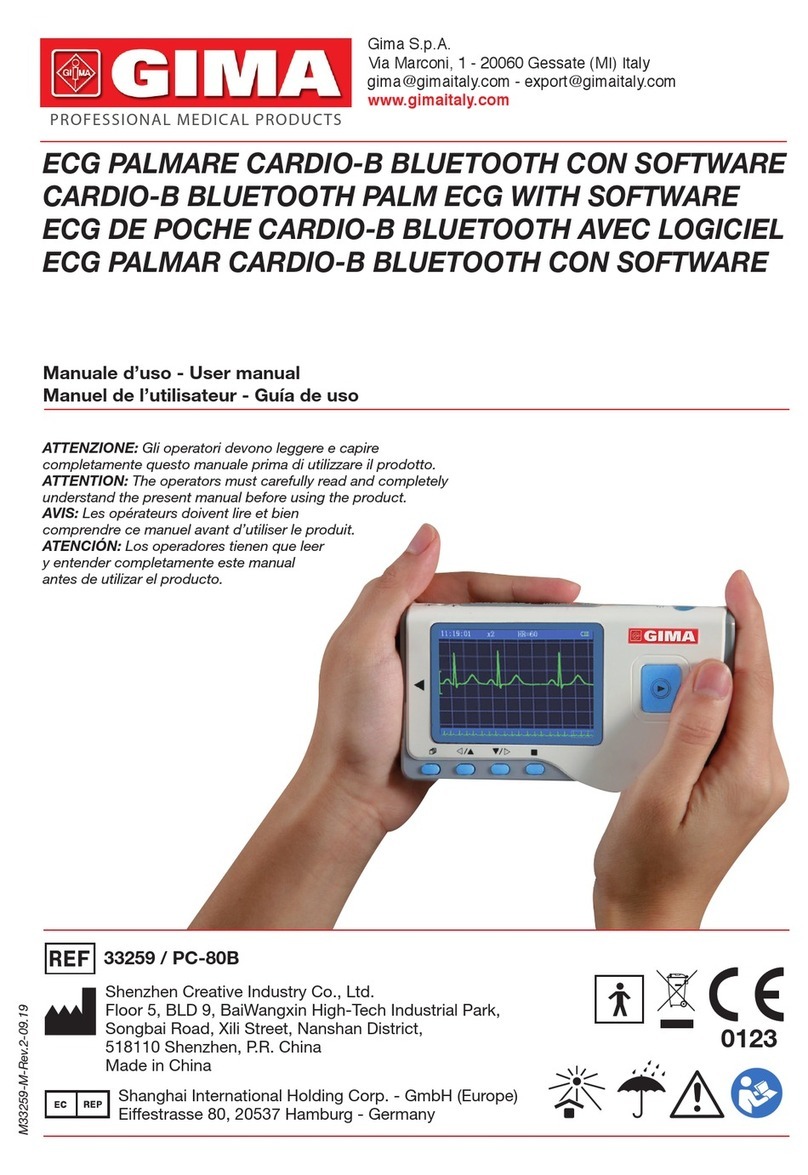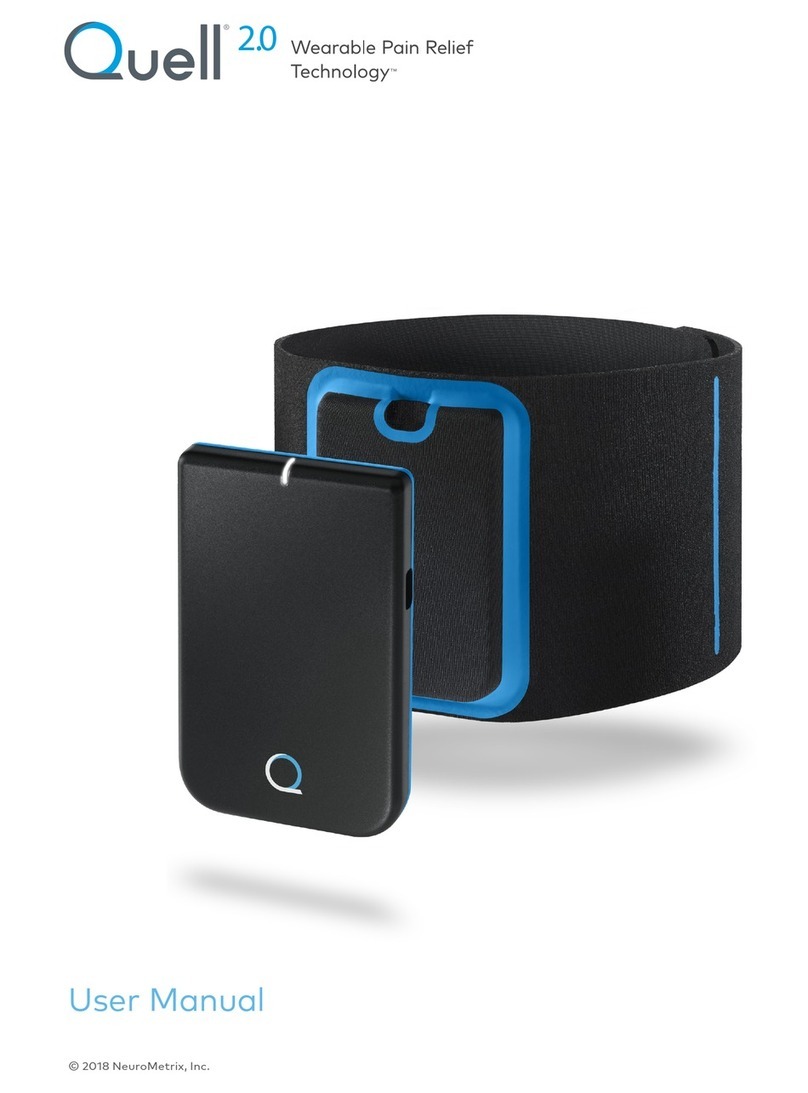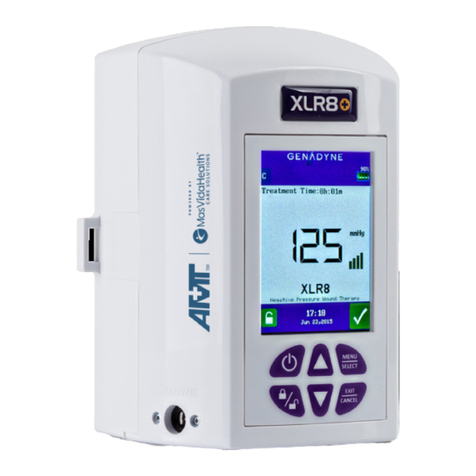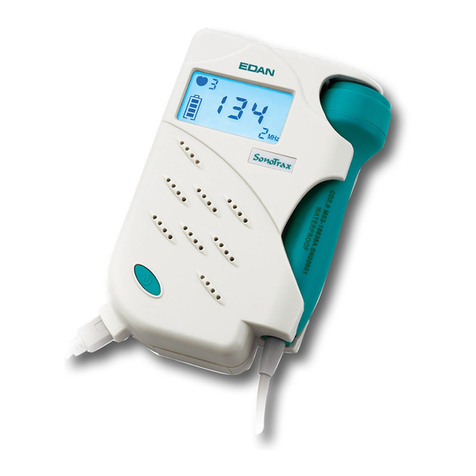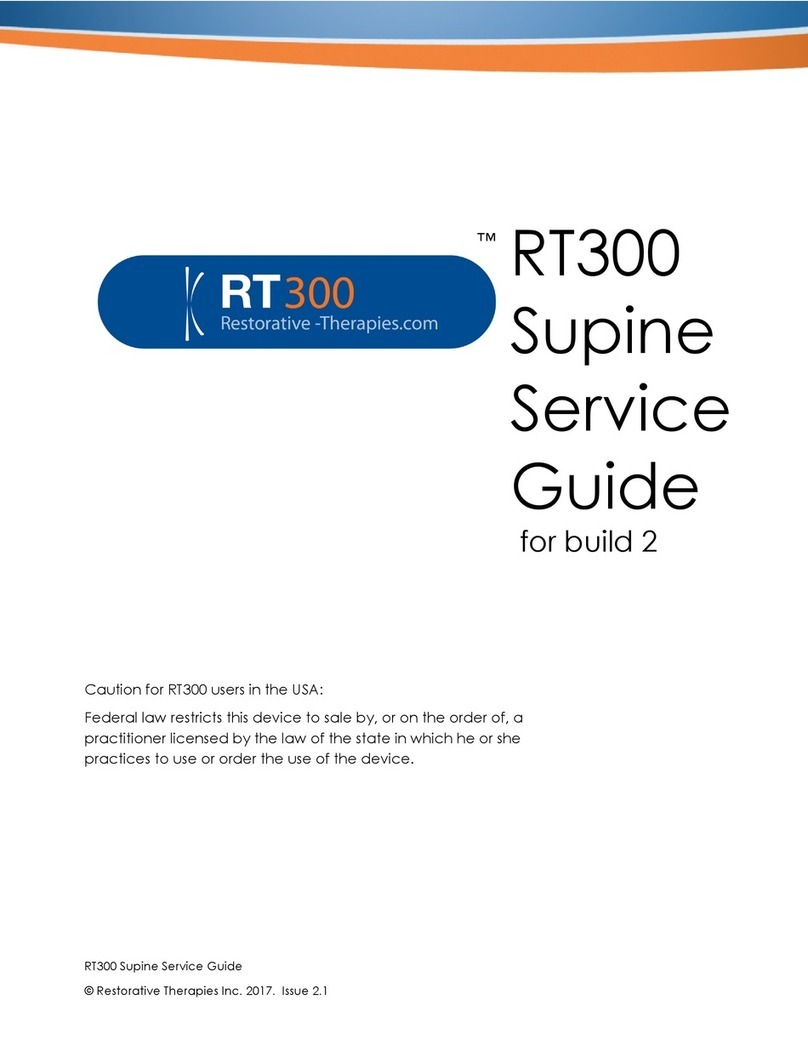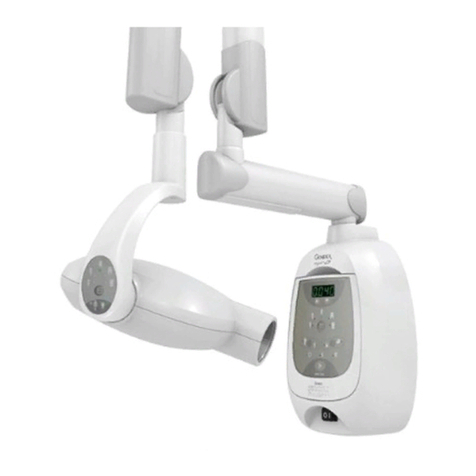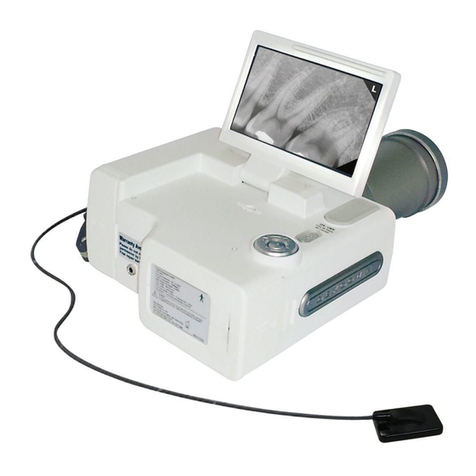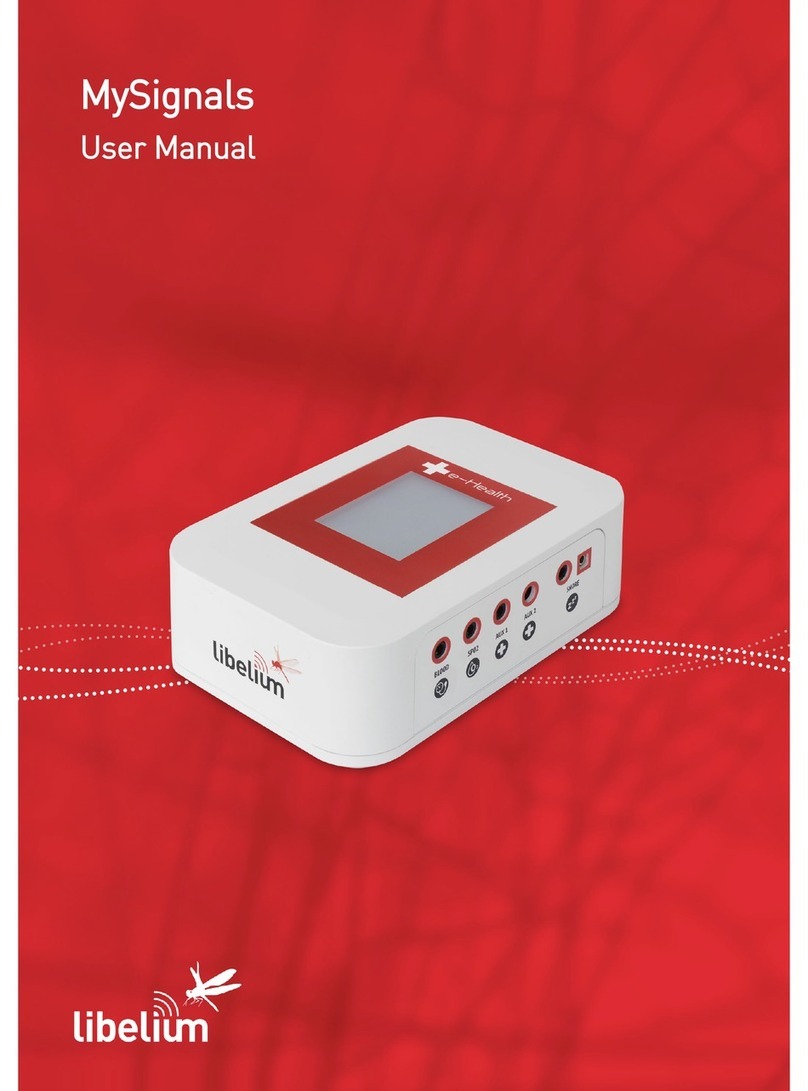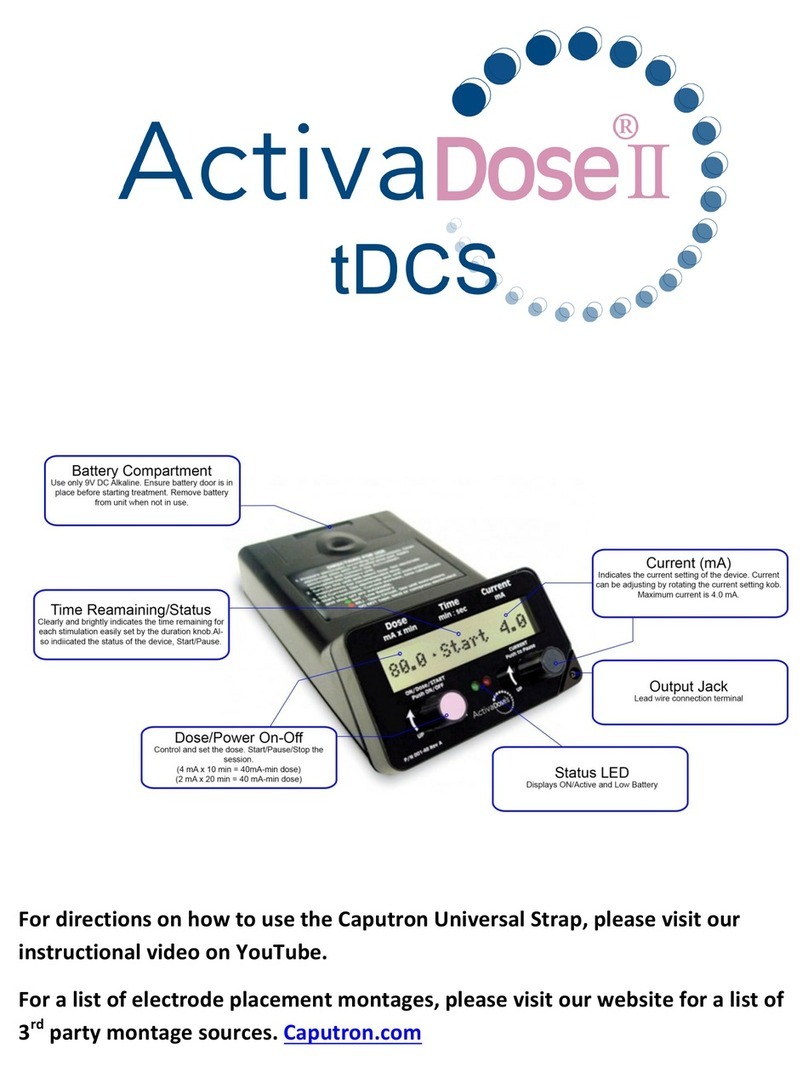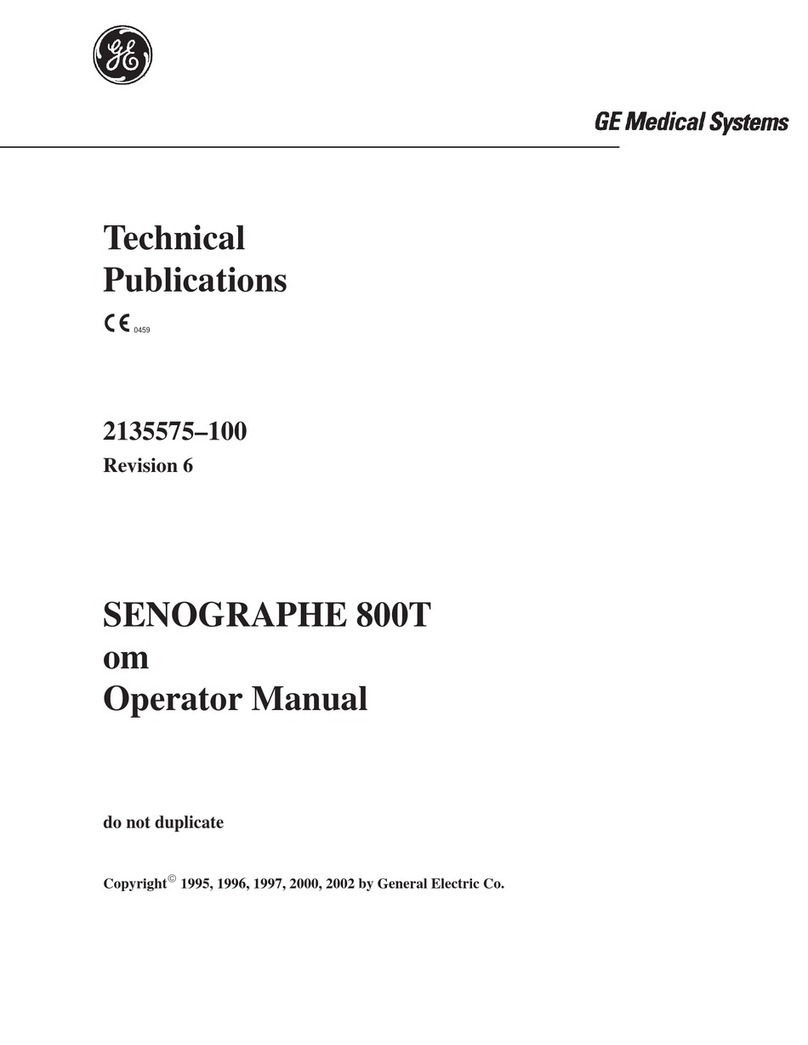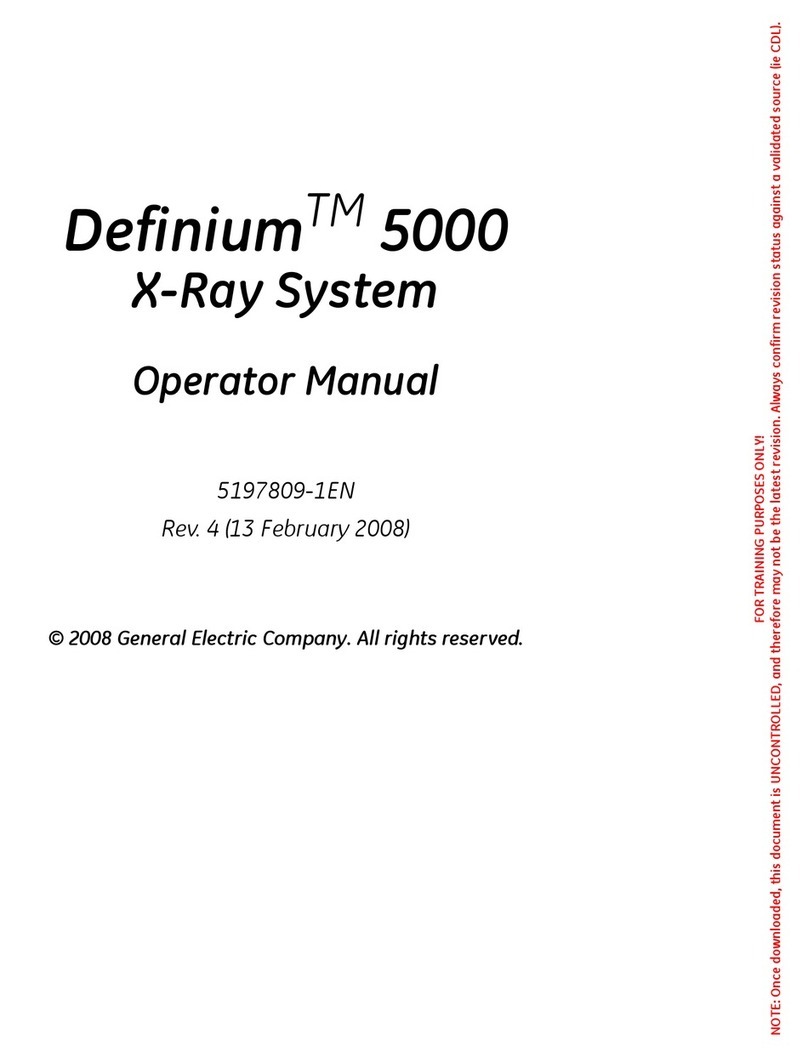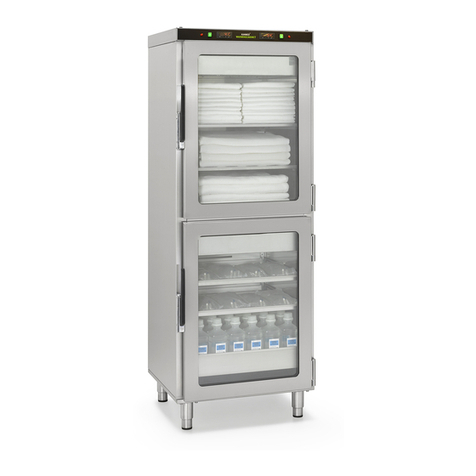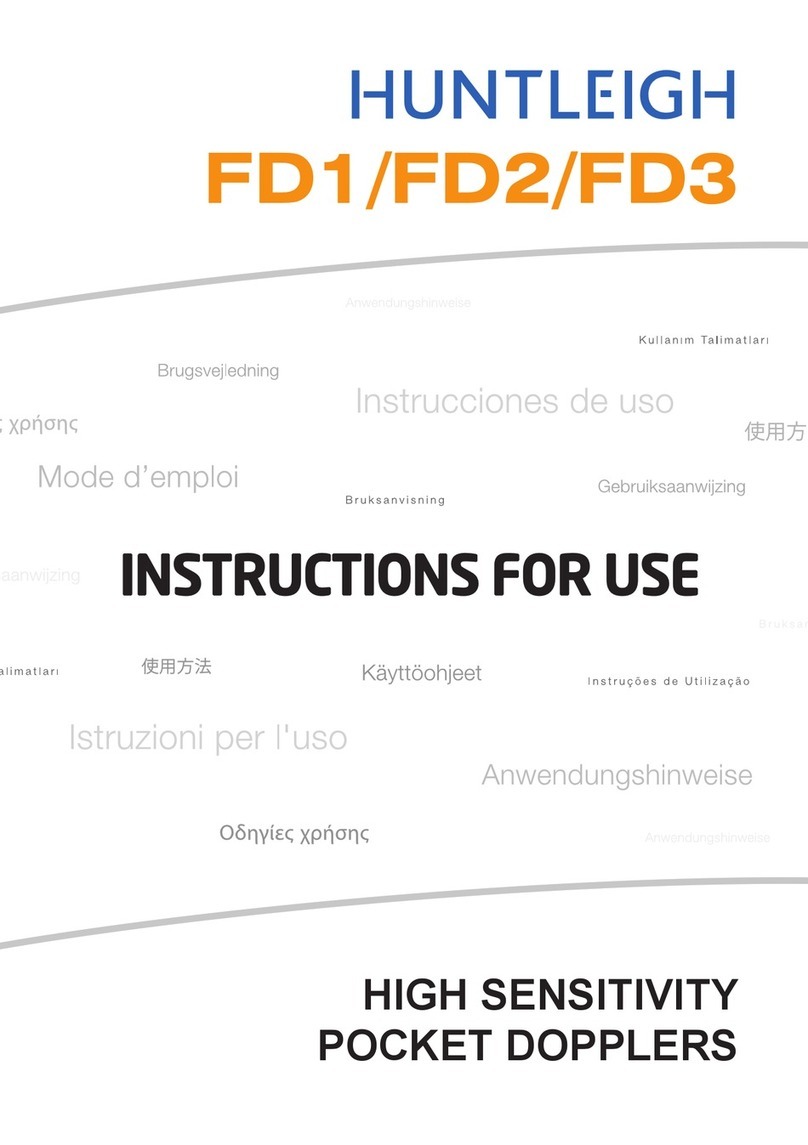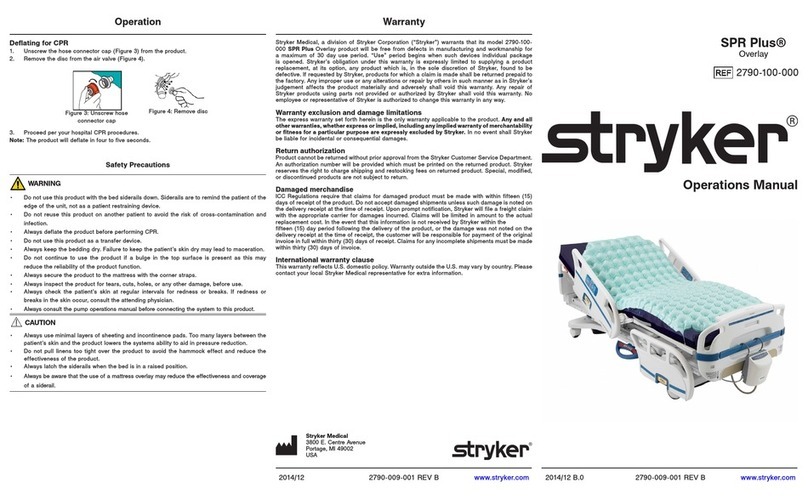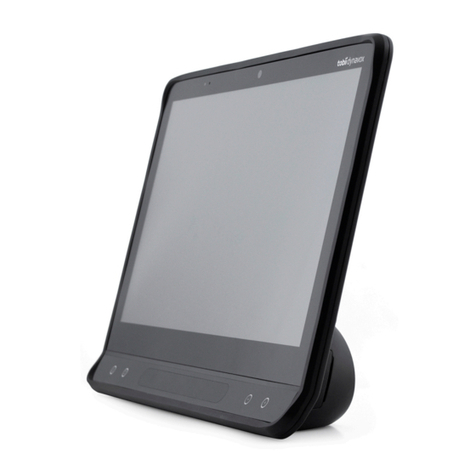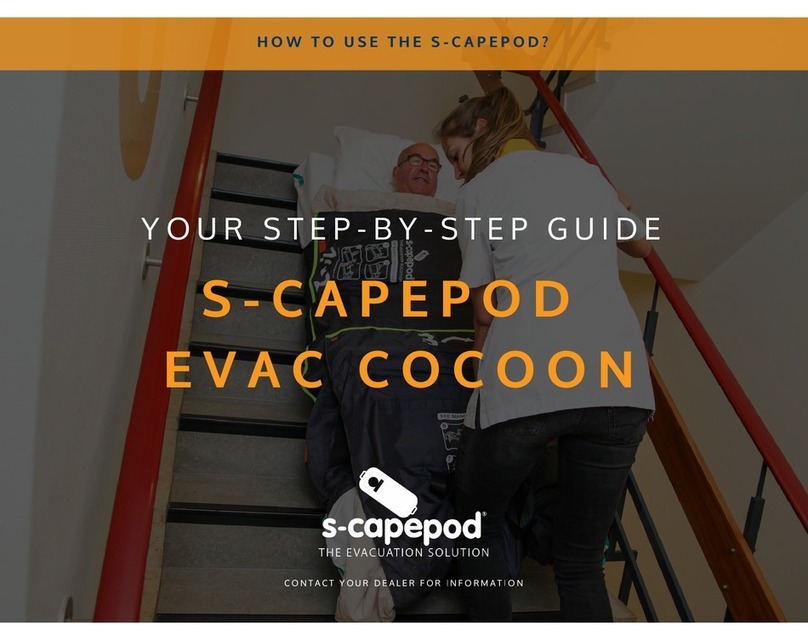
7
KONSTRUKTIONSEIGENSCHAFTEN
Die antitraumatische Tragbahre 34103 besteht fast ga-
enzlich aus eloxiertem Aluminium welcher Korrosions-
bestaendig ist und gleichzeitig die notwendige Staerke
und Leichtigkeit des Ganzen gewahrleistet.
Die Tragelemente bestehen aus iessgepressten
Alu-Rohren in der Groesse geeignet um die durch den
Einsatz bewirkten Beanspruchungen gewachsen zu sein.
Die Tragstruktur und die Gelenkverbindungen sind aus
Aluminiumprolen hergestellt und sind so entwickelt
worden um die hoehste Sicherheit gewaehrzuleisten
und zufaelligen Oeffnungen vorzubeugen.
Die Vorrichtung kann in Bezug auf die Längsrichtung in zwei gleiche (spiegelverkehrte) Teile zerlegt werden. Sie ist mit einem
Verlängerungssystem mit entsprechenden Verriegelungssystemen ausgestattet, um es an die Körpergröße des Patienten anzu-
passen. Ferner verfügt sie über eine rutschfeste Oberäche und wird mit einem Satz von 3 Sicherheitsgurten geliefert.
DIE KONSTRUKTIONSEIGENSCHAFTEN DER TRAGBAHRE 34103 ENTSPRECHEN DER EUNORM EN 1865.
ALLE MECHANISCHE PRUEFUNGEN, DIE TAUGLICHKEIT BESCHEINIGEN WURDEN BEI EINER “CE” ANER-
KANNTEN PRUEFSTELLE DURCHGEFUEHRT.
BEDIENUNGSANLEITUNG
Um der Verletzten auf die Tragbahre legen zu koennen, muessen eine oder beide Gelenkverbindungen die sich am Trag-
bahrenende benden, ausgehakt werden.
Dies ist moeglich durch Druecken des Knopfes A. Die beweglichen Teile der Tragbahre breiten sich aus und werden
unterhalb dem Verletzen geschoben, danach werden sich diese wleder schliessen, darauf achten dass die Schliesshaken
festen Sitz haben; man muss den typischen metallischen Schliesston hoeren (siehe Bild 2).
Um die Laenge der Tragbahre der Patienthoehe anzupassen muss der Hebel B wie im Bild 2 angehoben werden Das obere
Teil der Tragbahre so weit wie notwendig herausziehen und den Hebel B wieder zuruckdrucken und darauf achten dass
die Haltezapfen in den diesbezueglichen Haltebohrungen eingedrungen sind.
Bevor der Patient bewegt wird, sollte er mit den drei Gurten, die sich entsprechend auf der Höhe der Brust, des Beckens
und einige Zentimeter über dem Knie benden, befestigt werden.
Die Tragbahre kan sowohl in der min Erstraeckungslaenge oder auch gefaltet aufbewahr werden. In diesem letzten Fall ist
es ausreichend wenn der ausziehbare tell herausgezogen wird und danach das ganze zusammengefaltet wird.
Es wird darauf hingewiesen dass die Tragbahre nur bei den vorgesehen Handgriffen getragen werden kann iede andere
Handhabun koennte die Tragbahre zerstoeren und dem Patient Schaeden bewirken.
Für die Reinigung der Tragbahre wird die Verwendung von Wasser und Seife oder eines nicht aggressiven Desinfektions-
mittels empfohlen. Die Verwendung von sauren, alkalischen und lösungsmittelhaltigen Produkten, wie Aceton oder Ver-
dünner, muss vermieden werden.
Wenn noetig ist es ratsam manchmal mit Vaselinfett (geringe Menge) die gleitenden Tuben zu schmieren.
ACHTUNG: Die Bedienung der Tragbahre solIte immer nur von dafuer bestimmten und erfahrenem Personal ausgefuehrt
werden. Lassen Sie nicht zu, dass ungeschulte Personen beim Gebrauch des Geräts helfen, da dies zu Verletzungen des
Patienten oder sich selbst führen kann.
- Vor jedem Gebrauch muss die Integrität der Vorrichtung überprüft werden. Bei Anomalien oder Schäden, die die Funk-
tionalität und Sicherheit der Vorrichtung, also des Patienten und der Rettungskräfte, beeinträchtigen könnten, muss die
Tragbahre sofort aus dem Einsatz genommen und der Hersteller kontaktiert werden.
- Sollte sich herausstellen, dass die Tragbahre nicht ordnungsgemäß funktioniert, muss umgehend ein ähnliches Produkt
zum Einsatz kommen, damit die Kontinuität der Rettungsmaßnahmen gewährleistet ist.
- Die Verwendung der Vorrichtung auf eine jegliche andere Weise als die im vorliegenden Handbuch beschriebene, ist
verboten.
- Die Vorrichtung darf nicht willkürlich verändert oder modiziert werden. Die Änderung könnte zu einer unvorhersehbaren
Funktionsweise führen und folglich den Patienten oder die Rettungskräfte verletzen.
-
Die Vorrichtung darf in keiner Weise verändert werden (Änderung, Nachbesserung, Ergänzung, Reparatur). Andernfalls über-
nimmt der Hersteller keine Haftung hinsichtlich der korrekten Funktionsweise oder für eventuelle Schäden, die durch die Vor-
richtung selbst hervorgerufen wurden. Darüber hinaus werden die CE-Zertizierung und die Produktgarantie ungültig
ABMESSUNGEN
Erstreckungslaenge min 1710 mm
Erstreckungslaenge max 2050 mm
Gefaltene Laenge 1215 mm
Breite 432 mm
Dicke bei zugeklapptermm Tragbahre 100 mm
Gewicht 8,5 kg
Belastbarkeit 159 kg
DEUTSCH
Achtung: Anweisungen (Warings)
sorgfältig lesen An einem kühlen und
trockenen Ort lagern Gebrauchsanweisung
beachten
Medizinprodukt gemäß
Richtlinie 93/42/CEE Vor Sonneneinstrahlung
geschützt lagern Erzeugniscode
Hersteller Chargennummer
